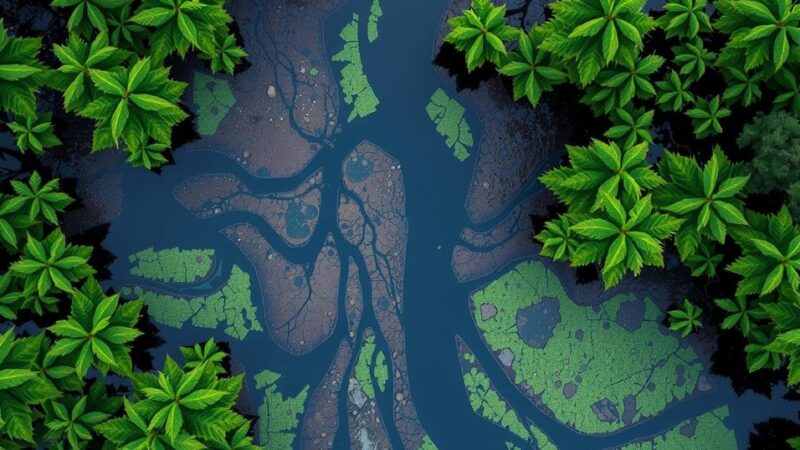A major oil spill in Ecuador’s Amazon, caused by a rupture in a Petroecuador pipeline, has affected multiple rivers and a wildlife refuge. Over half a million residents are impacted, with environmental authorities declaring a state of emergency. Immediate cleanup efforts have been initiated, highlighting the ongoing problems related to oil spills in the region.
A significant oil spill has occurred in Ecuador’s Amazon, specifically in the northwestern Esmeraldas province, affecting numerous rivers and a vital wildlife refuge. This incident has placed over half a million residents at risk. A rupture in a 500-kilometer pipeline managed by the state-owned Petroecuador, which took place on March 13, allowed crude oil to flow downstream over 80 kilometers into the Esmeraldas River and its tributaries, extending towards the Pacific Ocean.
Witnesses reported a significant eruption of oil similar to a “geyser” lasting up to seven hours. Marine biologist Eduardo Rebolledo Monsalve from the Pontifical Catholic University of Ecuador has been evaluating the situation. He noted that the southern shore of the Esmeraldas River is heavily contaminated, with tributaries like the Viche and Caple rivers experiencing a complete loss of oxygen, rendering them anoxic. Monsalve highlighted the spill’s potential for devastating aquatic life both temporarily and in the long term, projecting a three-year impact in smaller rivers under mild rainfall scenarios.
In response to this environmental crisis, local authorities declared an emergency on March 14, following statements from Esmeraldas Mayor Vicko Villacis regarding the unprecedented ecological damage caused by the spill. Although Petroecuador is still assessing the volume of oil released, the pipeline in question can transport up to 360,000 barrels of crude oil daily, moving from the Lago Agrio oil field to the Esmeraldas refinery for processing and export.
The spill has severely affected the Esmeraldas River Estuary Mangrove Wildlife Refuge, a protected area of 242 hectares. The oil has contaminated mangrove channels, causing harm to vital vegetation and aquatic species. On March 18, Ecuador’s Ministry of Environment, Water, and Ecological Transition called for non-profit organizations and volunteers for assistance in cleanup efforts, emphasizing the urgency of the situation.
The refuge supports diverse flora and fauna, including three species of mangrove trees and over 100 species of fish, birds, and mammals. The Ministry has mandated Petroecuador to undertake immediate measures for containment and cleanup while activating emergency conservation funds to manage and monitor the damage.
Ecuador has a troubling history with oil spills; according to Amazon Frontlines, over 1,496 incidents have been recorded in the country from 2005 to 2022, with 93% occurring in the Amazon region.
This oil spill in Ecuador’s Amazon showcases critical environmental vulnerabilities, impacting not only local wildlife and ecosystems but also the health and livelihoods of over half a million residents. The long-term effects depend on ensuing environmental conditions and remediation efforts. With Ecuador’s history of similar incidents, addressing pipeline safety and environmental protections remains imperative to safeguard natural resources and communities. Immediate actions taken by authorities and the involvement of volunteers are crucial in managing this ecological disaster.
Original Source: news.mongabay.com






